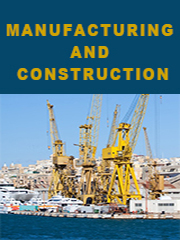Report overview
The Residual Gas Analyzer (RGA) is a spectrometer that can effectively measure the chemical composition of gases present in low-pressure environments. The residual gas analyzer actually ionizes each component of the gas to generate various ions, and then detects and determines the mass-to-charge ratio.
This report aims to provide a comprehensive presentation of the global market for Residual Gas Analyzer (RGA), with both quantitative and qualitative analysis, to help readers develop business/growth strategies, assess the market competitive situation, analyze their position in the current marketplace, and make informed business decisions regarding Residual Gas Analyzer (RGA). This report contains market size and forecasts of Residual Gas Analyzer (RGA) in global, including the following market information:
Global Residual Gas Analyzer (RGA) Market Revenue, 2018-2023, 2024-2029, ($ millions)
Global Residual Gas Analyzer (RGA) Market Sales, 2018-2023, 2024-2029, (Unit)
Global top five Residual Gas Analyzer (RGA) companies in 2022 (%)
The global Residual Gas Analyzer (RGA) market was valued at US$ 279.6 million in 2022 and is projected to reach US$ 332 million by 2029, at a CAGR of 2.5% during the forecast period. The influence of COVID-19 and the Russia-Ukraine War were considered while estimating market sizes.
The major manufacturers of residual gas analyzers in the world include Infracon, AFA, MKS, Stanford (SRS), Extorr, Pfeiffer Vacuum, Horiba, Extrel, Hiden Analytical, AMETEK, etc. Judging from the market share of the major suppliers of residual gas analyzers, American manufacturers are leading the field in this field. Inforcon is the world's largest supplier, and its output value share in the global market exceeds 27% in 2019.
We surveyed the Residual Gas Analyzer (RGA) manufacturers, suppliers, distributors and industry experts on this industry, involving the sales, revenue, demand, price change, product type, recent development and plan, industry trends, drivers, challenges, obstacles, and potential risks.
Total Market by Segment:
Global Residual Gas Analyzer (RGA) Market, by Type, 2018-2023, 2024-2029 ($ Millions) & (Unit)
Global Residual Gas Analyzer (RGA) Market Segment Percentages, by Type, 2022 (%)
1-100 amu
1-200 amu
1-300 amu
Global Residual Gas Analyzer (RGA) Market, by Application, 2018-2023, 2024-2029 ($ Millions) & (Unit)
Global Residual Gas Analyzer (RGA) Market Segment Percentages, by Application, 2022 (%)
Industrial Applications
Research Applications
Global Residual Gas Analyzer (RGA) Market, By Region and Country, 2018-2023, 2024-2029 ($ Millions) & (Unit)
Global Residual Gas Analyzer (RGA) Market Segment Percentages, By Region and Country, 2022 (%)
North America
US
Canada
Mexico
Europe
Germany
France
U.K.
Italy
Russia
Nordic Countries
Benelux
Rest of Europe
Asia
China
Japan
South Korea
Southeast Asia
India
Rest of Asia
South America
Brazil
Argentina
Rest of South America
Middle East & Africa
Turkey
Israel
Saudi Arabia
UAE
Rest of Middle East & Africa
Competitor Analysis
The report also provides analysis of leading market participants including:
Key companies Residual Gas Analyzer (RGA) revenues in global market, 2018-2023 (Estimated), ($ millions)
Key companies Residual Gas Analyzer (RGA) revenues share in global market, 2022 (%)
Key companies Residual Gas Analyzer (RGA) sales in global market, 2018-2023 (Estimated), (Unit)
Key companies Residual Gas Analyzer (RGA) sales share in global market, 2022 (%)
Further, the report presents profiles of competitors in the market, key players include:
INFICON
ULVAC Technologies
MKS
Stanford Research Systems (SRS)
Extorr
Pfeiffer Vacuum GmbH
Horiba
Extrel
Hiden Analytical
AMETEK
Outline of Major Chapters:
Chapter 1: Introduces the definition of Residual Gas Analyzer (RGA), market overview.
Chapter 2: Global Residual Gas Analyzer (RGA) market size in revenue and volume.
Chapter 3: Detailed analysis of Residual Gas Analyzer (RGA) manufacturers competitive landscape, price, sales and revenue market share, latest development plan, merger, and acquisition information, etc.
Chapter 4: Provides the analysis of various market segments by type, covering the market size and development potential of each market segment, to help readers find the blue ocean market in different market segments.
Chapter 5: Provides the analysis of various market segments by application, covering the market size and development potential of each market segment, to help readers find the blue ocean market in different downstream markets.
Chapter 6: Sales of Residual Gas Analyzer (RGA) in regional level and country level. It provides a quantitative analysis of the market size and development potential of each region and its main countries and introduces the market development, future development prospects, market space of each country in the world.
Chapter 7: Provides profiles of key players, introducing the basic situation of the main companies in the market in detail, including product sales, revenue, price, gross margin, product introduction, recent development, etc.
Chapter 8: Global Residual Gas Analyzer (RGA) capacity by region & country.
Chapter 9: Introduces the market dynamics, latest developments of the market, the driving factors and restrictive factors of the market, the challenges and risks faced by manufacturers in the industry, and the analysis of relevant policies in the industry.
Chapter 10: Analysis of industrial chain, including the upstream and downstream of the industry.
Chapter 11: The main points and conclusions of the report.
